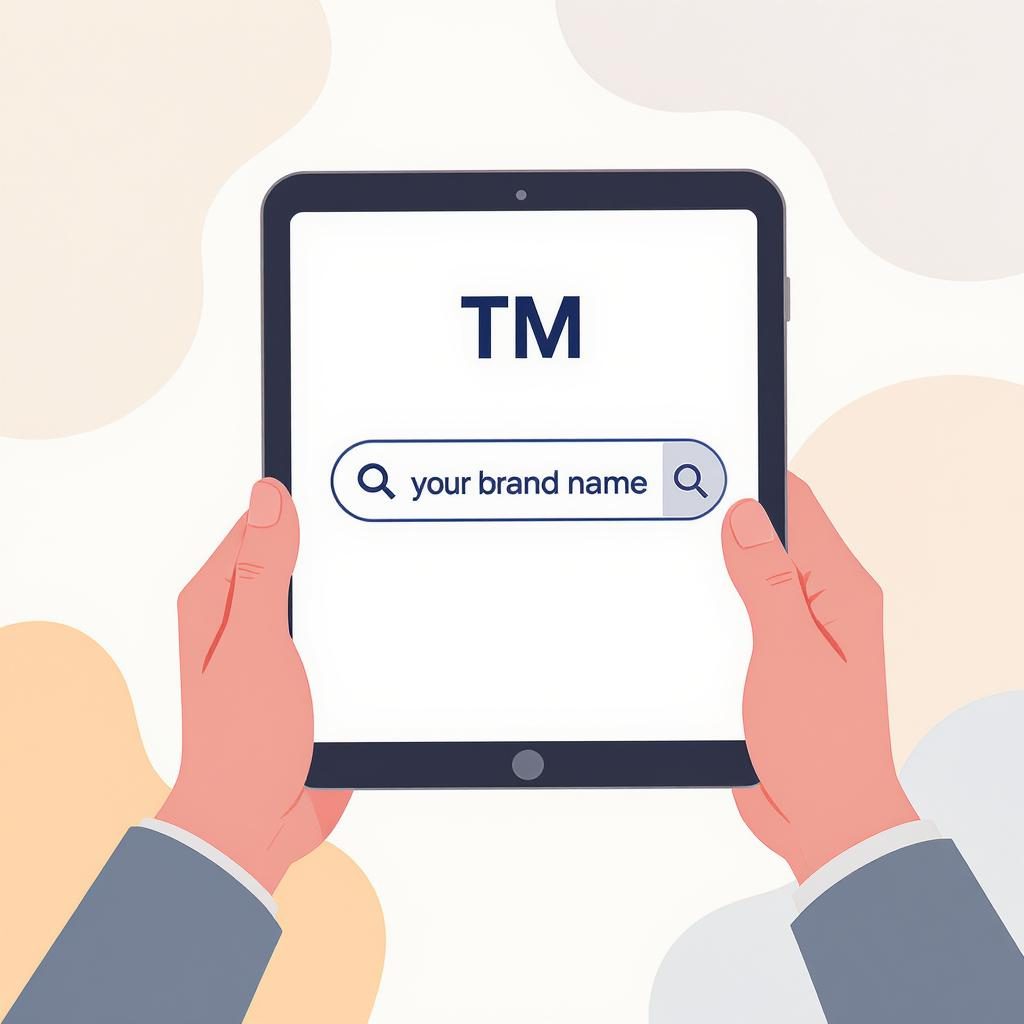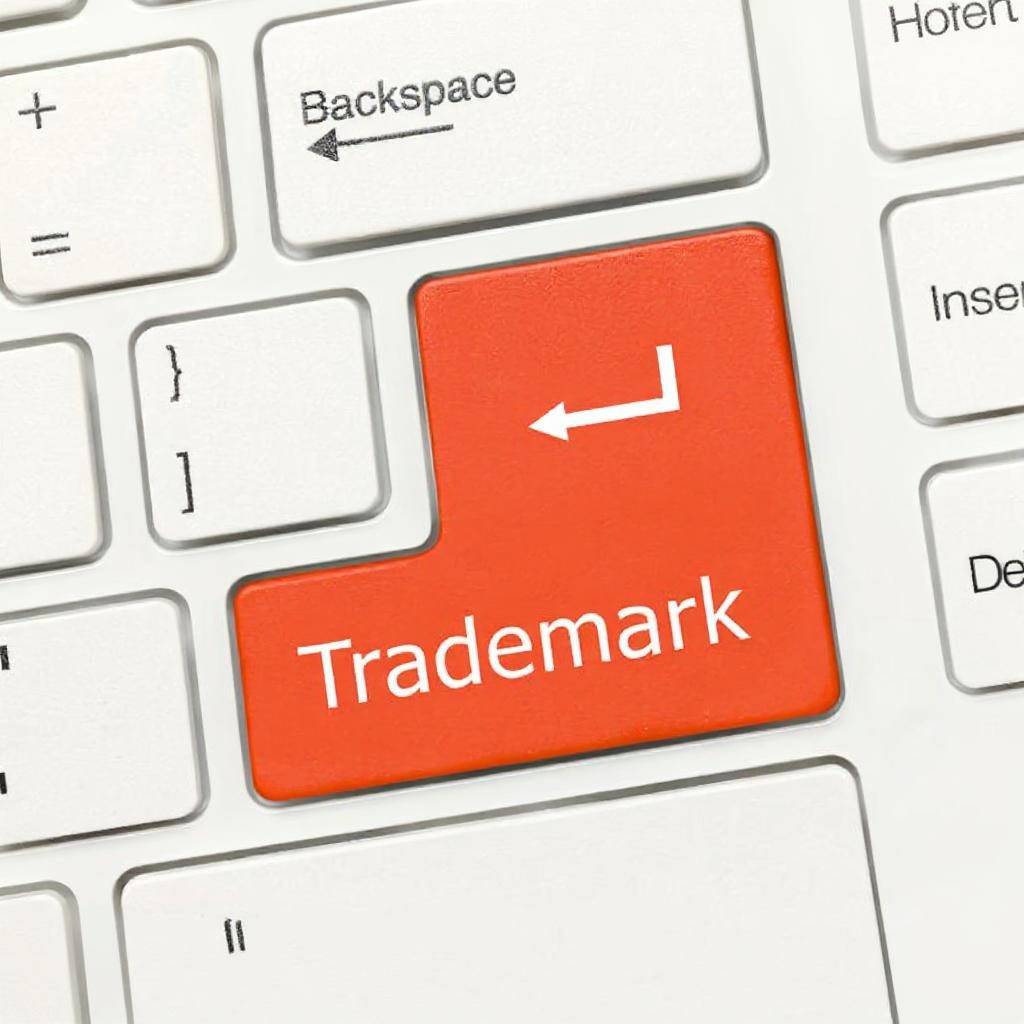
Brand Registration Guide in 2025
In the fast-evolving world of business and intellectual property, timing is everything. Whether you’re launching a startup, building an e-commerce empire, or growing a legacy brand, 2025 presents a rare


Looking to protect your brand across Europe? EU trademark registration is a smart and efficient solution. With just one application, your trademark is secured in all 27 European Union member countries, providing wide-reaching protection and streamlining your brand management throughout the region. It’s an ideal choice for businesses aiming to grow their presence in multiple European markets with a single, cost-effective registration.
We collaborate with a select group of trusted European representatives and associates to ensure smooth trademark filings.
Additionally, we have partnered with a highly experienced German lawyer, allowing us to file trademarks in Germany efficiently. German trademark registrations typically take just 3 to 8 weeks!
Covers filing your application and reporting the progress all the way to registration. 2 classes included. This is our entry-level package.
Covers full trademark registration, including reporting and responding to non-substantive examiner’s objections and free re-filing.
Covers all aspects of trademark registration, including responding to all examiner’s objections and free re-filing. More free extras.
Prices depend on the country. Please check individual country page for exact prices for each package.
Our “ALL IN” package includes government fees, responses to examiner objections (office actions), opposition proceedings, free re-filing, and additional benefits.
If you receive an office action, we will notify you promptly and provide an estimate to respond based on our hourly rate. Whenever possible, we offer a flat fee option.
If your budget is limited and our free EU trademark search does not reveal any registration obstacles, you can proceed confidently with your application.
The “BELLS AND WHISTLES” package includes government fees, responses to substantive office actions, opposition proceedings, and other valuable free extras.
Our most popular package offers peace of mind and predictable budgeting for your trademark registration.
We handle non-substantive office actions at no extra cost. Additionally, if your trademark is refused, you can file a new trademark with professional fees waived!
If your trademark is refused, you have the option to file a new application with our professional fees waived.
We’ll file a new application for you at no additional professional fee.
This package is recommended if our trademark search reveals potential obstacles to your registration. It’s also ideal if you plan to file under multiple classes.
We handle all office actions at no additional cost. Plus, if your trademark is refused, you have the option to file a different trademark with professional fees waived! This package offers complete peace of mind and predictable budgeting throughout the process.
The EU government filing fee is €850 for the first trademark class.
The government filing fee for the second class is EUR €50.
The filing fee for each additional class beyond the second is EUR €150.

As of 2025, the European Union (EU) consists of 27 member countries. These nations are: Austria, Belgium, Bulgaria, Croatia, Cyprus, Czech Republic, Denmark, Estonia, Finland, France, Germany, Greece, Hungary, Ireland, Italy, Latvia, Lithuania, Luxembourg, Malta, Netherlands, Poland, Portugal, Romania, Slovakia, Slovenia, Spain, and Sweden.
When applying for a trademark registration in the EU, your trademark will be protected across all these 27 countries with a single application through the European Union Intellectual Property Office (EUIPO). This makes trademark registration in the EU a highly efficient and cost-effective option for businesses looking to secure brand protection across the European market.
Brexit had a significant impact on trademark registration in the EU, especially for businesses that previously relied on EU-wide protection to cover the United Kingdom. As of January 1, 2021, all existing EU trademark registrations no longer provide protection in the UK.
To address this, the UK Intellectual Property Office (UKIPO) automatically created comparable UK trademarks for every existing EU trademark registration in force by the end of 2020. These cloned trademarks retain the original EU trademark’s filing date and status but are now independent UK rights, subject to UK laws and renewal procedures.
For any EU trademark applications that were still pending as of December 31, 2020, applicants had until September 30, 2021 to file a corresponding UK application while retaining the EU filing date.
If you’re planning a trademark registration in the EU today, remember that it now covers 27 EU countries only, and you’ll need a separate application to protect your trademark in the UK. This change makes it essential for brand owners to consider dual filing strategies if they intend to operate in both markets.
The process for trademark registration in the EU is handled through the European Union Intellectual Property Office (EUIPO) and offers a simple, centralized system that provides protection across all 27 EU member states with a single application. Here’s an overview of the steps involved:
Conduct a Trademark Search:
Before applying, it’s highly recommended to check if your desired trademark is already registered or pending. This helps avoid conflicts and potential objections.
File Your Application:
Submit your application to the EUIPO online. You’ll need to provide details such as the trademark name or logo, the goods and services it will cover (classified under the Nice Classification), and applicant information.
Formal Examination:
The EUIPO will review your application to ensure it meets all formal requirements and does not conflict with public order or accepted principles of morality.
Publication in the EU Trademark Bulletin:
If your application passes the examination, it will be published for a three-month opposition period, during which third parties can challenge the application if they believe it conflicts with their existing rights.
Registration:
If no oppositions are filed — or if any are resolved successfully — your trademark will be officially registered. You’ll then receive a certificate of registration, and your trademark will be valid for 10 years, renewable indefinitely.
In the context of trademark registration in the EU, a Power of Attorney (PoA) is a legal document that authorizes a representative — such as a trademark attorney, agent, or legal firm — to act on behalf of the trademark applicant during the registration process.
However, unlike some other countries, the European Union Intellectual Property Office (EUIPO) typically does not require a signed Power of Attorney for filing or managing a trademark registration in the EU. Applicants can appoint a representative by simply providing their details in the application form, without needing to submit a formal PoA document.
That said, in certain situations — such as filing oppositions, appeals, or representing the applicant in legal disputes — a signed Power of Attorney might be requested to confirm the authority of the representative.
This flexibility makes the process of trademark registration in the EU efficient and user-friendly, especially for businesses working with professional trademark firms or international brand management services.
While trademark registration in the EU offers broad protection across 27 countries, there are certain situations where it might not be advisable to file an application:
Limited Market Interest:
If your business operates only in one or two EU countries, it may be more cost-effective to file for national trademarks directly in those specific countries rather than an EU-wide registration.
Potential Conflicts:
If a similar or identical trademark already exists in the EU, especially one with senior rights, your application may face opposition or refusal. Conducting thorough trademark searches beforehand is essential.
Non-Use Concerns:
The EU trademark system requires genuine use of the mark within five years of registration. If you don’t plan to actively use the trademark in the EU, you risk cancellation due to non-use.
High Opposition Risk:
If your trademark is descriptive, generic, or lacks distinctiveness, it might be rejected or opposed, resulting in wasted time and fees.
Budget Constraints:
Although EU trademark registration can be cost-efficient for broad protection, the initial and renewal fees might be high if your brand only targets a small market.
After purchasing a trademark package from Trademark Focus, the next steps in your trademark registration in the EU process typically include:
Initial Consultation:
Trademark Focus will reach out to understand your brand, business needs, and the scope of protection you require within the EU.
Trademark Search:
A comprehensive search is conducted to identify any conflicting or similar trademarks within the EU, reducing the risk of rejection or opposition.
Application Preparation:
Your trademark application is carefully prepared, including classification of goods and services according to the Nice Classification, ensuring accurate and broad protection.
Filing with EUIPO:
Trademark Focus will file your trademark application with the European Union Intellectual Property Office (EUIPO), initiating the formal registration process.
Monitoring and Updates:
Throughout the examination and opposition period, Trademark Focus monitors the application’s progress and keeps you informed of any developments or required actions.
Registration and Certification:
Upon successful registration, you will receive your trademark certificate, confirming your exclusive rights across all EU member states.
Ongoing Support:
Trademark Focus may offer renewal services, enforcement advice, and assistance with opposition or infringement issues to help you maintain your trademark registration in the EU over time.
If you need to quickly secure a trademark to meet Brand Registry requirements, especially for platforms like Amazon, the fastest way is to pursue trademark registration in the EU through the European Union Intellectual Property Office (EUIPO). The EUIPO offers a streamlined application process that can typically take around 4 to 6 months from filing to registration, which is faster than many national systems.
To expedite the process:
Conduct a thorough trademark search before filing to avoid delays caused by objections or oppositions.
File a clear and well-prepared application covering the specific goods or services you intend to register for Brand Registry.
Consider professional assistance from trademark experts or services like Trademark Focus to ensure all documents are correctly submitted and deadlines met.
Once your trademark registration in the EU is granted, you can use it to enroll your brand in various Brand Registry programs, securing enhanced brand protection and access to marketing tools on platforms such as Amazon.
Keep in mind that while some platforms accept trademark applications in process, having a fully registered trademark offers stronger protection and more benefits.
When submitting a trademark registration in the EU or a trademark application in the UK, certain essential details are required to ensure a smooth and successful filing process:
Applicant Information:
Full name or company name, address, and contact details of the person or entity applying for the trademark.
Trademark Representation:
A clear representation of the trademark — this could be a word mark (text), logo, design, or a combination.
List of Goods and Services:
A detailed list of goods and/or services that the trademark will cover, classified according to the internationally recognized Nice Classification system.
Priority Claim (if applicable):
Details of any earlier trademark applications filed in other countries within the last six months, which you wish to claim priority from.
Power of Attorney (if applicable):
If you appoint a representative or agent to act on your behalf, the necessary authorization or Power of Attorney might be required, especially in the UK.
Payment of Fees:
Payment of the official application fees is necessary at the time of filing.
For trademark registration in the EU, all these details are submitted to the European Union Intellectual Property Office (EUIPO) through their online system, while UK applications are filed with the UK Intellectual Property Office (UKIPO).
Providing accurate and complete information helps prevent delays and objections, making your trademark registration in the EU or UK a smoother process.
This is the legal name of your business entity.
It’s registered with your state, provincial, or national government.
It appears on legal documents like incorporation papers, tax filings, and contracts.
Example:Microsoft Corporation
Important:
One company can own several brands and operate under multiple names.
This is the name you use in the marketplace to sell your products or services.
It may or may not be the same as your company name.
If it’s different, you typically need to register it as a “Doing Business As” (DBA) or “Trade Name.”
This is your address on the internet — the web address people type to visit your website.
It doesn’t give you trademark rights by itself, but it’s a valuable part of your brand identity.
Example:www.microsoft.comwww.skype.com
A single company can own multiple domain names for different brands, campaigns, or products.
A trademark is a legally protected brand identifier.
It can be a word, phrase, logo, symbol, sound, color, or even a scent that distinguishes your product or service from others in the market.
Registered trademarks give you exclusive rights to use that mark in connection with specific goods or services.
Example:MICROSOFT ![]()
The Windows logo ![]()
The Skype icon ![]()
Incorporating your business or registering a company name does not automatically give you trademark rights to use that name as your brand.
For example, in the US, each state has its own rules for business name registration. If you register an LLC named Coolapples LLC in Delaware, that registration only applies in Delaware. Another business could register Coolapples LLC in Indiana or any other state without infringing on your state-level business name.
This means your state-level company name registration does not protect your brand nationwide.
If you want exclusive, nationwide rights to your brand name—especially if you plan to expand beyond one state—you should register a federal trademark with the United States Patent and Trademark Office (USPTO). This trademark gives you the exclusive legal right to use your brand name for your goods or services across the entire country.
Similarly, if you’re in Canada or Australia, registering a trademark with the respective national trademark office will give you country-wide protection and make it easier to sell, license, or enforce your rights to your brand.
In the context of trademark registration in the EU, the ‘all or nothing’ rule means that when you file a single EU trademark application, the trademark will either be approved for all the goods and services listed in your application or refused entirely. Unlike some national systems where you can register a trademark for some classes or goods and not others, the EUIPO evaluates the entire application as a whole.
If there is an issue — such as a conflict or objection related to any one class or item in your list — the EUIPO cannot partially approve the trademark for the remaining goods or services. This all-or-nothing approach encourages applicants to carefully select and limit the scope of their goods and services to reduce the risk of refusal.
Because trademark registration in the EU covers 27 countries with one application, this rule makes it crucial to conduct a thorough trademark search and tailor your application carefully to maximize your chances of full approval.
In trademark registration in the EU, goods and services must be classified according to the Nice Classification, an internationally recognized system established by the Nice Agreement. This classification divides goods and services into 45 classes — 34 classes for goods and 11 for services.
When submitting your trademark application to the European Union Intellectual Property Office (EUIPO), you need to clearly specify which classes your trademark will cover based on the products or services your brand offers. Each class represents a specific category, such as Class 25 for clothing or Class 35 for advertising and business management services.
Correct classification is essential because your trademark protection applies only to the goods and services you list in your application. Choosing the appropriate classes helps ensure your brand is protected in the right markets and avoids unnecessary costs.
Using the Nice Classification system simplifies the trademark registration in the EU process by providing a standardized way to describe and categorize goods and services across all member countries.
United States: 30 days from publication
Brazil: 60 days from publication
Canada, Australia, New Zealand: 2 months from publication
South Korea: 2 months from publication
United Kingdom: 2 months (can extend to 3 months on request)
Japan: 2 months from publication (trademark published twice: after filing and after registration)
Germany: 3 months from publication (publication occurs after registration)
European Union: 3 months from publication
China: 3 months from publication
India: 4 months from publication
However, there are important risks:
If someone else has already been using a similar or identical mark before you (whether registered or not), you may be infringing on their rights and could face legal action.
Without registration, your rights are limited and harder to enforce nationwide or internationally.
Registration provides stronger legal protection, public notice, and easier enforcement.
Trademarks may be filed at the state or federal level. State trademarks protect your mark in a specific state while federal trademarks protect your mark in all the states. State trademarks generally provide less legal protection than federal trademarks. Businesses operating in only one state should trademark in that state. Businesses operating in interstate commerce may file for a federal trademark. For example, if you operate a restaurant or a hair-dressing salon in Florida, you are not eligible for a federal trademark. In this case, you should apply for a trademark in the state of Florida. However, if you have two or more restaurant locations in more than one state, in our case, one in Florida and one in Georgia, you are eligible for a federal trademark. A business intending on expanding nationally or internationally should conduct a trademark search and file a federal trademark as soon as possible.
In the case of trademark registration in the EU, a registered trademark is valid for 10 years from the date of registration. After this initial period, you can renew your trademark indefinitely by paying the renewal fees every 10 years.
Maintaining your trademark registration in the EU through timely renewals is crucial to ensure continued protection of your brand across all 27 member states. Failure to renew on time can result in the cancellation of your trademark rights.
This long-term validity and renewable option make trademark registration in the EU a valuable investment for businesses seeking sustained brand protection throughout the European market.
| Rank | Country | Average Time to Register | Notes |
|---|---|---|---|
| 1️⃣ | Germany | 1–3 months | Fastest. Can register within 1 month with accelerated examination. Occasionally unpredictable. |
| 2️⃣ | United Kingdom | 3.5–4 months | Consistent and low government fees. |
| 3️⃣ | European Union (EU) | 3.5–7 months | 3.5–4 months via “fast-track”; regular filings take 6–7 months. Higher government fees. |
| 4️⃣ | Mexico | 4–8 months | Can fluctuate; some applications take longer. |
| 5️⃣ | Australia | 7.5–12 months | Most trademarks register within a year if no objections. |
| 6️⃣ | China | 9–12 months | Appeals can delay by 8+ months. Improving timelines. |
| 7️⃣ | India | 10–12 months | Similar to China in average timelines. |
| 8️⃣ | United States | 12–14+ months | Often delayed by office actions. Can exceed a year easily. |
| 9️⃣ | Japan | 10–14 months | Fairly steady timeline. |
| 🔟 | Brazil | 12–18 months | Among the slower countries for registration. |
| 1️⃣1️⃣ | Canada | 36–42 months | Slowest. Pandemic delays made it worse. Expected to improve post-Madrid Protocol membership. |
The trademark registration process for trademark registration in the EU typically takes around 4 to 6 months from the date of filing your application with the European Union Intellectual Property Office (EUIPO). However, this timeline can vary depending on several factors.
After you submit your application, the EUIPO conducts a formal examination to check for compliance with filing requirements and potential conflicts with existing trademarks. If your application passes this stage, it is published in the EU Trademark Bulletin for a three-month opposition period, during which third parties can challenge your trademark.
If no oppositions are filed or if any oppositions are resolved successfully, your trademark will be registered, and you’ll receive the official registration certificate. Delays may occur if oppositions or objections arise, which can extend the process.
Overall, trademark registration in the EU offers a relatively fast and efficient way to protect your brand across 27 member countries with a single application, making it an attractive option for businesses seeking broad European protection.

In the fast-evolving world of business and intellectual property, timing is everything. Whether you’re launching a startup, building an e-commerce empire, or growing a legacy brand, 2025 presents a rare

In today’s competitive business environment, protecting your brand identity is not just a legal necessity—it’s a strategic move that can have long-lasting impacts on your business’s success. One of the

In today’s fast-paced and highly competitive business world, building a brand that stands out is no easy task. From your logo and business name to your product packaging and slogans,
Trademark Focus is a trusted trademark registration firm with more than 10 years of expertise. We specialize in handling trademark applications and protection services across Canada, the US, and internationally.
No.518, Jianshe Avenue, Jianghan District, Wuhan, Hubei Province